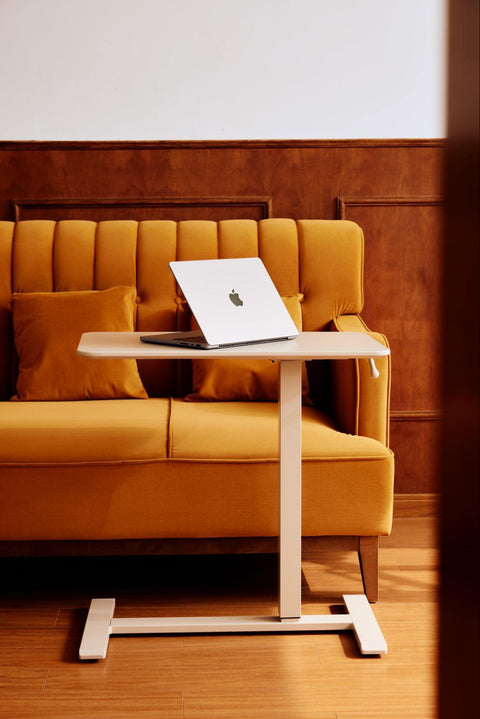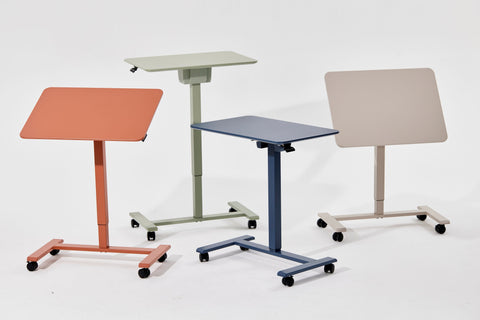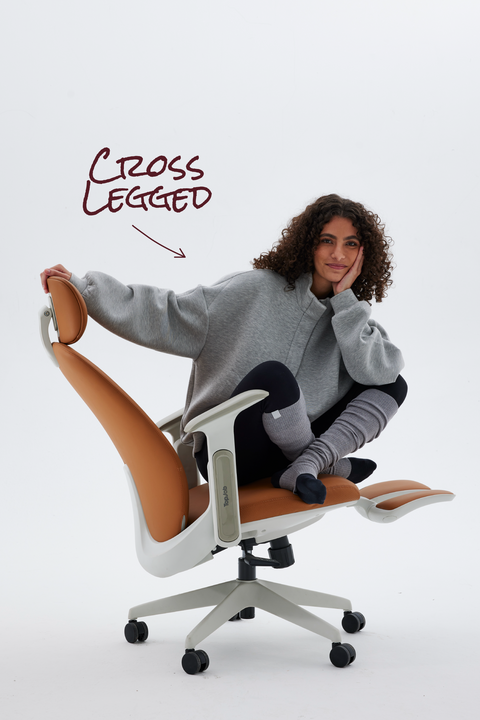If your workstation has a dual monitor setup, the idea is to have a desk that can handle both monitors in particular. You should make sure you have the right desk that will keep you as productive as possible while worrying less about clutter and space. Indeed, you do need a larger size desk—but what is considered the best size?
This guide will allow you to choose the right desk for your dual monitors. Let’s go over the details.
What Is the Recommended Desk Size for Dual Monitors?
Let’s discuss what the recommended desk size is for dual monitors. Take notes of what these numbers are so you can be able to decide which desk will be the best fit for your dual monitor setup moving forward. Let’s take a look at some of the facts you’ll need to know:
-
A standard monitor will measure from 21 to 27 inches in size. Please note that a desk that can accommodate both monitors side by side will need to have a bit more space for the sake of ergonomics. Otherwise, you may be using a single monitor.
-
The minimum width of the recommended desk size for dual monitors should be somewhere between 47 to 55 inches.
-
Ideally, the width of such desks should measure from 60 to 72 inches. Ultra-wide setup widths are desks measured from 72 inches and up. These may also include l-shaped desks and others that can handle secondary monitors, a large-size monitor, or a curved monitor that is large in screen size.
With these facts mentioned, it’s important to decide which desk width will be advisable. It will be dependent on the size of the monitors. For example, if you are using monitors that are each 24 inches in size, a 55-inch wide desk will be an excellent option, with a 60-inch width being even more flexible. However, a 72-inch desk could be beneficial for those who have a larger monitor size in general.
Considerations for Desk Depth
Though width does have its importance, depth is just as equally important. Nevertheless, the depth will be ideal for determining how far the monitors can be placed from your eyes—which can affect both visibility and comfort. Ideally, you want to aim for a minimum depth of 24 inches, but the ideal depth should be 30 inches and beyond.
24-inch depth can be sufficient for the monitor stand/mount, keyboard, and other items. If you are aiming for additional comfort, it may be advisable to find a desk that will provide you with excellent comfort and a less cluttered environment—making a recommended depth of 30 inches or more.
L-Shaped and Corner Desks for Dual Monitors
L-shaped desks have proven their worth for those looking for an excellent amount of space. Not to mention, they seem like the ideal option for dual monitors. Depending on the size, they can provide ample space for dual monitors (even if it's a larger screen) and plenty of other useful items you need for your office setup.
Additionally, an L-shaped desk can be great for cable management, space for additional items, and a better area for performing multiple tasks. A corner desk will be excellent if you don’t have enough space for an L-shaped desk, but just enough to accommodate both monitors. Plus, corner desks will allow you to angle monitors that will be fit for your ergonomic needs.
Standing Desks
A standing desk has certainly been one of the more popular options for those at the office who want to balance sitting with standing, mainly because of the health benefits. What would be the recommended desk size for dual monitors if you want something that allows you to work in a standing position?
First, the width needs to be a minimum of 55 inches. It needs to have a weight capacity ranging from 50 to 100 pounds, and the construction needs to be sturdy enough to support dual monitors. These adjustable standing desks will provide you with excellent flexibility while being able to reduce strain on your body during long work sessions. A height-adjustable desk, like the AnyDesk Nest from TopJob, paired with an ergonomic chair, like TopJob’s Napa Ergonomic Chair, will be excellent for balancing sitting and standing during your work day.
What Additional Considerations Should You Know About?
While it is important to consider things like the width, depth, and desk types, we should take a look at some additional things that may pertain to your needs and preferences. Here are some ideas we should share with you:
Monitor Mounts and Stands
It’s always important to make sure that you optimize as much space as possible. You can do this by utilizing monitor arms or stands. Not only will it free up space, but it can also help with ergonomics. Specifically, it can allow your monitors to be at the right eye level to prevent eye strain and discomfort.
There is one caveat to address: stability. Make sure that the desk is sturdy enough to support the monitor mount.
Keyboard and Mouse Replacement
Of course, having a desk with plenty of space will allow you to set up the proper keyboard and mouse placement. As rules of thumb, consider the placement at an arm’s length while also allowing for space that will be ideal for wrist support. Make sure you are positioned at a slight downward angle to ensure the best ergonomic comfort possible.
Cable Management
If there is one important thing that no setup should neglect, it’s cable management. It ensures cleanliness and organization. Use cable trays or under-desk mounts to keep things nice and tidy. If necessary, consider using cable clips to hold them in place.
Alternatively, there’s always the wireless option. A wireless mouse and keyboard will offer you an excellent wire-free solution. Of course, it might just be the ultimate in cable management since you’ll deal with fewer cables in your workspace. It is also the most cost-effective option considering you will be spending less with a keyboard and mouse as opposed to spending a ton on wire management implements.
Storage and Desk Accessories
Storage can certainly be a blessing for many who use dual monitors in a desk space. You can consider using a desk that has drawers and shelves so you can be able to store all your necessary items neatly. Other things to consider include floating shelves, under-desk storage solutions, and drawer organizers. Maximizing desk efficiency will be important, especially if you are using one to accommodate dual monitors.

Frequently Asked Questions
We will be taking a look at a few frequently asked questions so you’ll have a good idea of what actions you can take when finding a desk that is the right size for dual monitors. Here’s a look at the following:
What Is Considered the Ideal Desk Size for 27-Inch Monitors?
A desk measuring 60 inches in width and 30 inches in depth will be best suited for dual 27-inch monitors. Ideally, make sure you have ample space for ergonomics and other essentials.
What Size Should the Monitors Be if My Desk Is 48 Inches in Width?
If you have a 48-inch desk, your best option may need to be to upgrade to a wider desk. However, if you are unable to at this time, consider using small monitors measured from 21-24 inches.
How Much Weight Can a Standing Desk Be Able to Hold?
Many standing desks should support anywhere from 50-100 pounds. Keep in mind that each desk may have lesser or greater support for heavier objects. When looking through catalogs with standing desks, pay attention to the weight capacity that it can handle.
Can I Use a Corner Desk for Dual Monitors?
Yes. There are corner desks that can be designed to handle dual monitors. These will be excellent for smaller spaces.
What Are the Best Materials for Dual Monitor Desks?
There are plenty of materials that are included in dual monitor desks. They include wood, metal, and MDF. Keep in mind that a sturdy frame and a smooth surface will both be beneficial for longevity. More importantly, try to find a desk that has material that will be durable in the long run. Don’t forget that the more durable the material is, the more it might cost.
Final Thoughts
Dual monitors can be great for productivity and multitasking. Yet, it is important to find the right desk size to accommodate these monitors along with the other essentials you need for a seamless and productive work day. The idea here is to find the one that will be the best fit for your needs.
You could go for a standing desk that will allow you to balance sitting or standing. Or something more spacious, allowing you to prioritize multi-tasking. Whatever desk you choose, make sure it’s the right size to handle your dual monitors at all times.
Are you looking for a desk to fit your dual monitors? Check out TopJob. They sell standing desks, like the AnyDesk Nest and the AnyDesk Fold, that are adjustable and ergonomic-friendly, allowing you to work comfortably throughout the day. Happy shopping!



